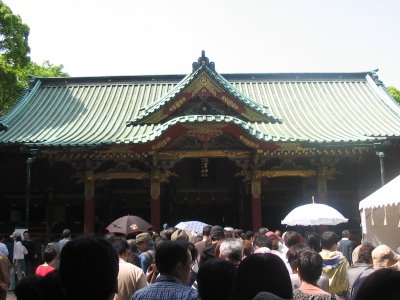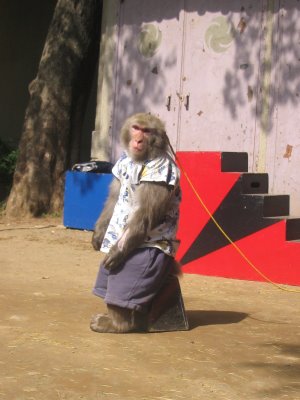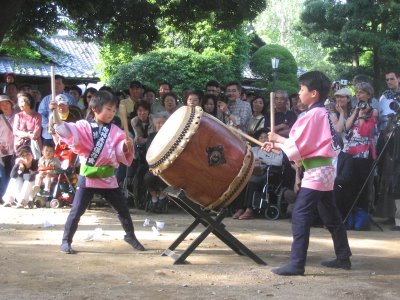Nezu matsuri
Last Friday, i went to my first "matsuri". Matsuri are religious festivals (Shinto or Buddhist) which are very popular among Japanese people. During those matsuri, there are many things to do : you can pray, participate to religious rites, buy various food (taiyaki, takoyaki, yakisoba...), spend time with your family or friends, admire fireworks ... In short: well, you got it: matsuri are big celebrations organized around a temple or a shrine. Matsuri usually take place in summer. Last Friday, the weather was so hot, it was just like summer.

(I know, you can't see anything on this map... but it gives colors to my blog)
 On Friday, it was Nezu shrine which organized its matsuri. Nezu is a very cute area in Tokyo, close to Ueno park. You can't see any skyscrapers there. On the contrary, there are very old typical wooden houses, small streets decorated with flowers. I really love this area.
On Friday, it was Nezu shrine which organized its matsuri. Nezu is a very cute area in Tokyo, close to Ueno park. You can't see any skyscrapers there. On the contrary, there are very old typical wooden houses, small streets decorated with flowers. I really love this area. 



Children get a tiny net which is made of paper. The purpose is to catch as many fish as possible until the paper net tears open. At the end, the children receive the fish they caught. Dad and Mom are gonna be happy !

There was another pool where one could catch small water turtles and tadpoles. It's quite crual, isn't it? Especially for those turtles which spend their time trying to climb the pool edge to regain a footing for a moment. It seems to me that Japanese peope have great progress to do concerning animal rights. And i haven't even talked about whaling yet...

Finally, the best for the end: during Nezu festival, i had the chance to listen to taiko. "Taiko" (太鼓 : 太 = tai = fat; 鼓 = ko = drum) is a generic word used to talk about all kinds of japanese drums. However, there are many sorts and sizes of drums. It is thought that those drums have been used for over 2000 years in Japan. They were used as soon as the 16th century on battlefields to intimidate the enemy, transmit messages to warriors and coordinate troops movements.

Taiko were also used during Shinto and Bbuddhist rites. During those rites, only one or two taiko played : ensembles were created much later. Only the men who had been chosen by priests were allowed to play.

Contemporary taiko ensembles are called (組太鼓: 組 = kumi = association, assembly; 太鼓 = daiko = drum). They appeared at the beginning of the fifties only. Daihachi Oguchi, a jazz drummer is behind the new style used by kumi-daiko. Oguchi had decided to play taiko for the Osuwa shrine ceremonies but he made the rythms sound more jazzy. He wondered why only one or two taiko could play together and broke a tradition, creating the first taiko ensemble. Nowadays, taiko ensembles are very popular since there are over 8000 kumi-daiko in Japan!
Most musicians of the taiko ensemble i listened to were female teenagers. Those two kids excepted, there were only two boys for eight girls. And they rocked!

And another video for the future big fans:
The young audience was captivated.

0 Comments:
Post a Comment
<< Home